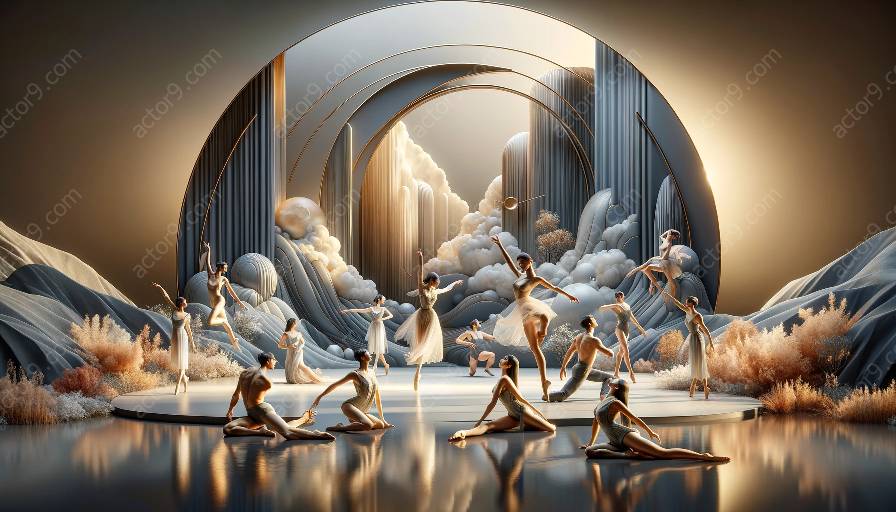Physical theatre is a form of performance that emphasizes the use of physical movement as a means of storytelling and expression. In this context, movement plays a pivotal role in conveying emotions, narratives, and themes, making it an essential element in the realm of drama and theatrical arts.
The Art of Physical Theatre
Physical theatre encompasses a diverse range of performance styles that prioritize the body and its movements as the primary mode of communication. This form of theatre often integrates dance, acrobatics, mime, and various physical disciplines to create a captivating and immersive experience for the audience. The emphasis on movement in physical theatre sets it apart from traditional forms of drama, placing a significant focus on the kinetic and visual aspects of performance.
Role of Movement in Physical Theatre
Movement serves as the core component of physical theatre, shaping the way stories are told and characters are portrayed on stage. It enables performers to convey meaning and evoke emotions through non-verbal communication, transcending linguistic barriers and engaging audiences on a universal level. The deliberate use of body language, gestures, and spatial relationships allows for the creation of dynamic and impactful performances that resonate deeply with spectators.
Expressive Possibilities
The freedom of movement in physical theatre provides artists with a vast array of expressive possibilities, enriching the theatrical experience with creativity and innovation. By harnessing the power of their bodies, performers can explore unique ways of embodying characters, depicting conflicts, and portraying abstract concepts. This dynamic form of expression opens doors to inventive choreography, physical storytelling, and evocative symbolism that captivates the imagination of the audience.
Enhanced Visual Storytelling
Physical theatre harnesses movement to elevate visual storytelling, transcending traditional dialogue-based narratives and delving into the realm of visual symbolism and metaphor. Through carefully choreographed movements, performers can create compelling and multi-layered narratives that unfold through the interplay of gestures, rhythms, and spatial dynamics. This visually captivating approach to storytelling enables audiences to immerse themselves in the narrative on a visceral and sensory level, fostering a profound connection between the performance and its viewers.
Elements of Drama in Physical Theatre
Physical theatre seamlessly integrates the fundamental elements of drama into its performative vocabulary, utilizing movement as a vehicle for expressing dramatic concepts and principles. Through the incorporation of dramatic elements such as tension, conflict, rhythm, and physicality, physical theatre breathes life into stories, transcending the limitations of traditional dialogue-driven theatre.
Tension and Release
The manipulation of tension and release through movement forms a significant aspect of physical theatre, as performers modulate their physical dynamics to create suspense, anticipation, and resolution within the narrative. The interplay of contrasting movements and gestures generates a palpable sense of dramatic tension, drawing the audience into the emotional currents of the performance.
Physicality and Presence
Physical theatre amplifies the inherent physicality and presence of performers, emphasizing the power of the body as a primary tool of expression. Through heightened awareness of their physicality, actors harness their presence to command the stage, embody characters with depth and authenticity, and forge compelling connections with the audience, reinforcing the immersive nature of the theatrical experience.
Rhythmic Dynamics
The rhythmic interplay of movement and gesture in physical theatre infuses performances with a dynamic sense of rhythm, pacing, and cadence, reminiscent of the musical qualities found within the elements of drama. The deliberate manipulation of physical rhythms and tempos enhances the theatrical flow and conveys emotional nuances, enriching the narrative tapestry with a captivating auditory dimension.
Conflict and Resolution
Physical theatre expertly utilizes movement to depict and embody conflicts, both internal and external, as well as the journey towards resolution and catharsis. The physicalization of conflict and resolution imbues performances with a tangible and visceral quality, enabling audiences to witness the transformative arcs of characters and narratives through expressive physicality.
In Conclusion
The pivotal role of movement in physical theatre underscores its profound impact on the art of storytelling and the theatrical experience. By integrating movement with the elements of drama, physical theatre engages audiences on a sensory, emotional, and intellectual level, fostering a rich tapestry of expression and communication that transcends traditional boundaries of dialogue-based performance. Through the artful convergence of movement and drama, physical theatre continues to captivate and inspire, offering a unique avenue for exploration, creativity, and connection within the realm of performing arts.




































